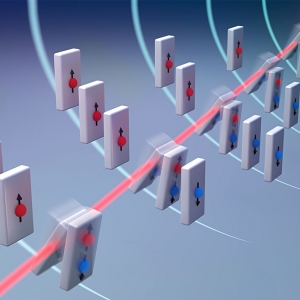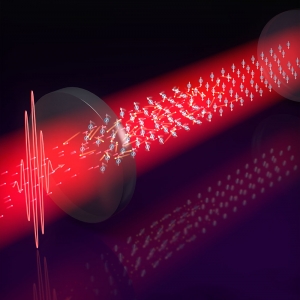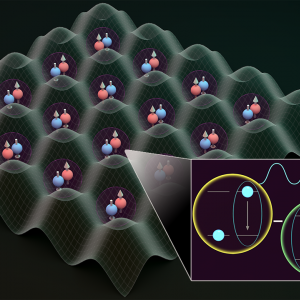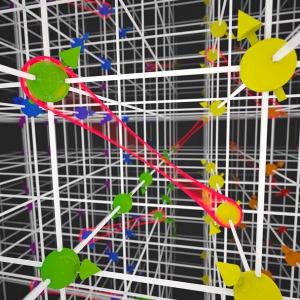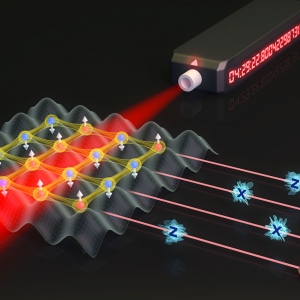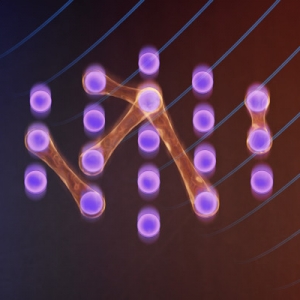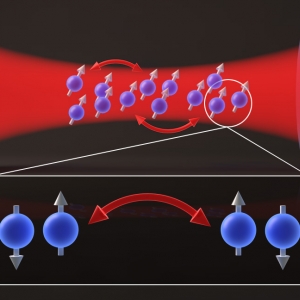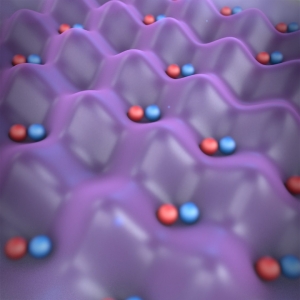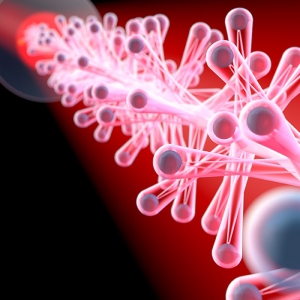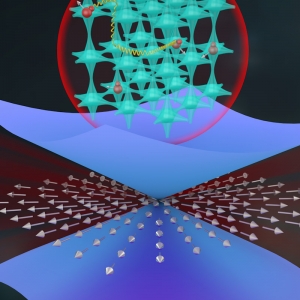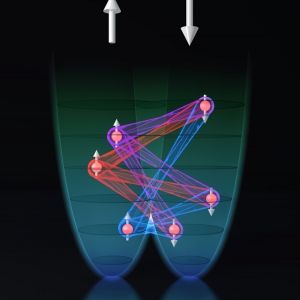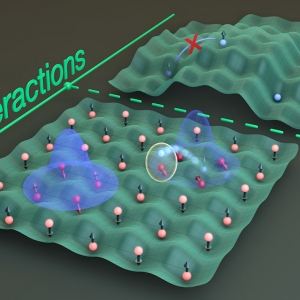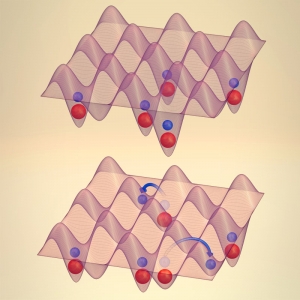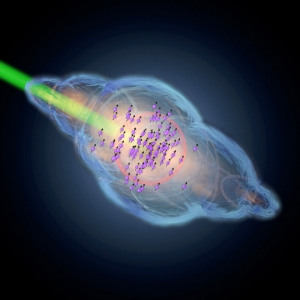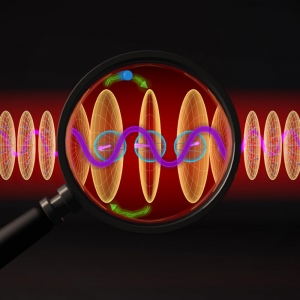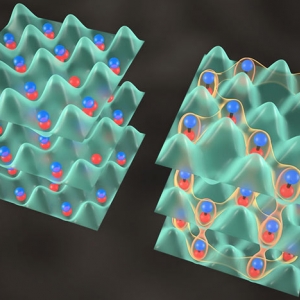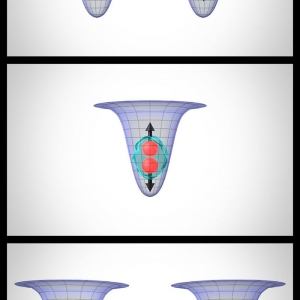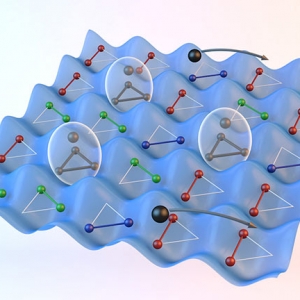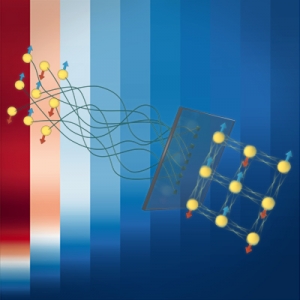Research Highlights
Atomic & Molecular Physics | Precision Measurement
Falling Dominos and an Army of Schrödinger’s Cats
Published: July 27, 2020
PI: Ana Maria Rey
Atomic & Molecular Physics
Phases on the Move: A Quantum Game of Catch
Published: April 29, 2020
PI: Ana Maria Rey | PI: James Thompson
Atomic & Molecular Physics | Quantum Information Science & Technology
The Power of the Dark Side
Published: January 06, 2020
PI: Ana Maria Rey
Atomic & Molecular Physics | Quantum Information Science & Technology
Dancing through dynamical phase transitions in an out-of-equilibrium state
Published: August 02, 2019
PI: Ana Maria Rey
Quantum Information Science & Technology
Tying Quantum Knots with an Optical Clock
Published: May 22, 2019
PI: Ana Maria Rey
Quantum Information Science & Technology
Chaos reigns in a quantum ion magnet
Published: April 29, 2019
PI: Ana Maria Rey
Atomic & Molecular Physics | Precision Measurement | Quantum Information Science & Technology
Twisting Atoms to Push Quantum Limits
Published: August 13, 2018
PI: Ana Maria Rey | PI: James Thompson
Atomic & Molecular Physics
Quantum Adventures with Cold Molecules
Published: September 07, 2017
PI: Ana Maria Rey | PI: John Bohn | PI: Jun Ye
Atomic & Molecular Physics | Precision Measurement
Quantum Leaps
Published: December 21, 2016
PI: Ana Maria Rey | PI: Jun Ye
Atomic & Molecular Physics | Quantum Information Science & Technology
The Beautiful Ballet of Quantum Baseball
Published: December 12, 2016
PI: Ana Maria Rey
Atomic & Molecular Physics
Going Viral: The Source of a Spin-Flip Epidemic
Published: November 11, 2016
PI: Ana Maria Rey
Atomic & Molecular Physics
The Ultramodern Molecule Factory: I. Doublons
Published: April 20, 2016
PI: Ana Maria Rey | PI: Deborah Jin | PI: Jun Ye
Atomic & Molecular Physics | Precision Measurement
Quantum Baseball
Published: March 21, 2016
PI: Ana Maria Rey | PI: Jun Ye
Atomic & Molecular Physics | Quantum Information Science & Technology
Creative Adventures in Coupling
Published: January 28, 2016
PI: Ana Maria Rey | PI: Jun Ye
Atomic & Molecular Physics
A Thousand Splendid Pairs
Published: November 06, 2015
PI: Ana Maria Rey | PI: Deborah Jin | PI: Jun Ye
Atomic & Molecular Physics | Quantum Information Science & Technology
Natural Born Entanglers
Published: November 02, 2015
PI: Ana Maria Rey | PI: Cindy Regal
Atomic & Molecular Physics | Quantum Information Science & Technology
Terms of Entanglement
Published: February 27, 2015
PI: Ana Maria Rey




